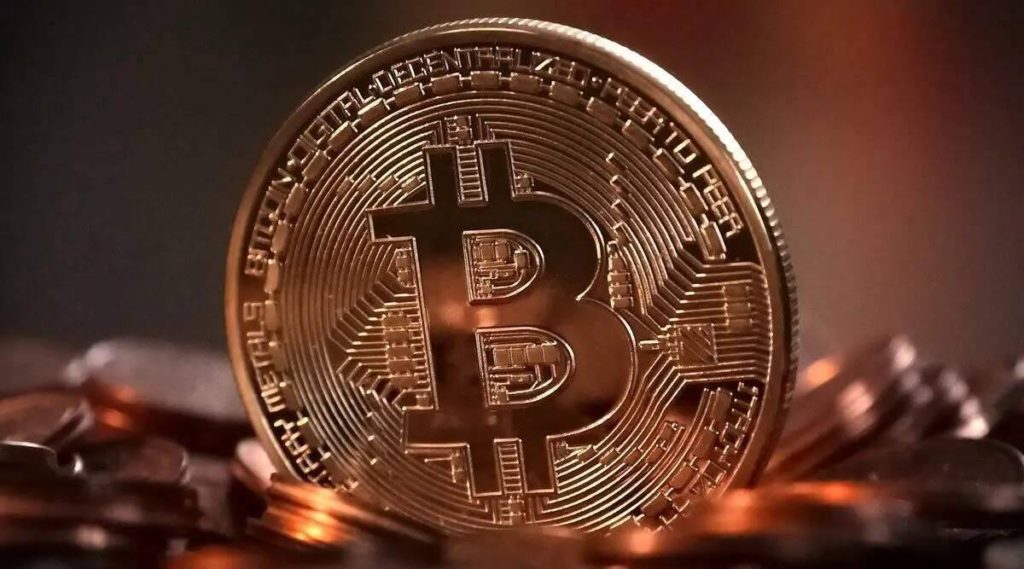Longtime market participant Matthew Hyland is confident that Bitcoin is poised for a bullish rally, and he outlined his predictions in a recent post on X (formerly Twitter).
Despite Bitcoin’s dip to $41,650 over the Christmas period, Hyland believes that the cryptocurrency is gearing up for significant price gains.
Hyland points to two key indicators, the Bollinger Bands and the Relative Strength Index (RSI), as signals for a short-term reversal in Bitcoin’s price.
He notes that the Daily Bollinger Bands are tightening, similar to the conditions that triggered previous price surges above $30,000 and $40,000.
Additionally, the Daily RSI is currently at a two-month low, and the 3-Day Moving Average Convergence Divergence (MACD) is on the verge of a crossover.
Bollinger Bands are a widely used volatility indicator that track Bitcoin’s price action and signal potential breakouts in volatility.
The narrowing of the daily-timeframe bands indicates that a new round of volatility may be on the horizon. This pattern has previously been observed in the lead-up to Bitcoin’s recovery above $30,000.
READ MORE: Grayscale’s Strategic Shift and CEO Resignation Spark Speculation Over Bitcoin ETF Approval
The RSI, a momentum oscillator, provides insight into whether BTC/USD is overbought or oversold at a given price.
With an RSI reading of 53, Bitcoin is well below the overbought threshold of 70 and even further from its recent peak of 76 in December. This suggests room for further upside potential.
Longer timeframes also support the bullish outlook, as veteran trader Peter Brandt noted last week.
Hyland adds that the Daily RSI is currently at its lowest levels in over two months, a period when Bitcoin was trading below $27,000.
However, one potential obstacle to Bitcoin’s bullish trend is the Moving Average Convergence Divergence (MACD) on three-day timeframes, which is showing signs of a bearish trend flip.
Hyland acknowledges this, but he highlights that there are several days left for the MACD signal to potentially negate itself based on price action.
He also points out that the MACD has been accurate in predicting both lower and higher prices throughout the year.
In conclusion, Matthew Hyland’s analysis suggests that Bitcoin is on the verge of a significant bullish move, with multiple indicators aligning in favor of a price surge.
While the MACD presents a potential bearish concern, it remains to be seen how Bitcoin’s price action will unfold in the coming days.
Blockchain security experts predict that in 2024, crypto projects and investors will face a range of significant threats, including AI-powered phishing scams, BRC-20 exploits, and new vulnerabilities in smart contracts.
Despite a decrease in scam and hack-related losses from $4 billion in 2022 to $1.7 billion in 2023, Jesse Leclere, a blockchain analyst at CertiK, warns that scams are becoming more sophisticated.
Users are urged to stay vigilant against well-executed exploits.
Leclere emphasizes that phishing attacks, evolving in sophistication, will target not only individual users but also corporate systems, using tailored social engineering tactics for the crypto context.
The December 14 Ledger Connect exploit serves as a prime example of an advanced attack.
Generative AI is expected to play a crucial role in making phishing scams more nefarious, allowing hackers to automate operations and create convincing fake calls, videos, and messages to deceive potential victims.
Jenny Peng, a research analyst from 0xScope, also warns that AI could contribute to generating realistic “deep fakes” to trick crypto users.
Peng predicts that hackers will pay extra attention to the burgeoning BRC-20 ecosystem in 2024 due to a relative lack of security developments.
She points out the double-spend exploit that hit the BRC-20 UniSat wallet in early 2023 as evidence that the ecosystem needs to quickly improve its security infrastructure.
READ MORE: Spot Bitcoin ETF Approval Expected to Transform Crypto ETF Market
Cross-chain bridges, a persistent concern for the industry, will continue to be problematic in 2024.
As the industry adopts cross-chain solutions for greater interoperability, these protocols become attractive targets for attackers.
Complex interactions between different protocols and chains can lead to vulnerabilities.
Notably, some of the largest crypto hacks have resulted from bridge exploits, including the infamous $650 million Ronin bridge hack.
Phil Larratt, director of investigations at Chainalysis, warns that bad actors will become more adept at avoiding detection in 2024. Illicit actors are expected to adopt more sophisticated tactics and techniques, especially as traditional organized criminals and financial crime actors increasingly embrace crypto.
To combat this trend, Larratt suggests the need for more intensive law enforcement investigations, increased training and knowledge sharing among law enforcement organizations, advanced fraud protection programs, and continued public-private sector partnerships.
As crypto evolves, so too must the strategies to counter emerging threats.
On December 26th, Bitcoin experienced a fresh decline in its price, with analysts attributing this weakness to seasonal trends.
Data from Cointelegraph Markets Pro and TradingView revealed that BTC/USD dropped to $42,200, marking a 2% decrease for the day and its lowest point in nearly a week.
Despite the holiday season, Bitcoin bulls did not witness a “Santa rally” or any positive surprises.
Trading resource Material Indicators commented on the recent Bitcoin price movements, stating that the final days of 2023 were expected to pose challenges for the cryptocurrency.
They noted that year-end profit-taking and tax loss harvesting would create headwinds for BTC bulls.
Material Indicators also highlighted the importance of Bitcoin’s 21-day simple moving average (MA), which stood at $43,115 at the time, slightly higher than the spot price. Co-founder Keith Alan emphasized the 21-day MA as a crucial support level in recent months.
Looking at the BTC/USDT order book liquidity on Binance, the largest global exchange, the mood remained pessimistic.
The order book showed bids as low as $37,000, and these lower bids had been increasing throughout the second half of December.
READ MORE: Mt. Gox Creditors Finally Receive Repayments for Long-Trapped Bitcoin Holdings
Popular trader Skew suggested that market participants were gearing up for further downside, with short positions positioning themselves for a potential break lower.
These short positions would be eager to see continued spot selling, or they might be forced to cover around the $43,000 mark.
While Bitcoin and Ethereum struggled, other major cryptocurrencies fared better as the year drew to a close.
Binance’s BNB and Solana’s SOL continued to demonstrate impressive weekly performances, with gains of 19.5% and 56.8%, respectively, over the past seven days. In contrast, ETH/USD only showed a 1.6% increase.
Solana, in particular, benefited from increased gas fees and airdrops, reaching nearly $126 on Christmas Day, its highest level since April 2022.
Some traders had been anticipating a shift in momentum from Bitcoin to altcoins, and Michaël van de Poppe, founder and CEO of trading firm MN Trading, noted a significant trend change in the overall altcoin market cap.
He suggested that the altcoin market capitalization was breaking out of a range that had persisted for over 500 days and predicted a potential 2x increase in Q1.
Grayscale, a prominent crypto asset manager, recently made an important regulatory move by submitting an amended S-3 filing to the United States Securities and Exchange Commission (SEC).
This development coincided with the announcement of Barry Silbert’s resignation as the CEO of its parent company, Digital Currency Group (DCG), from Grayscale’s board of directors.
The timing of Silbert’s departure has raised speculation within the crypto market regarding its potential impact on Grayscale’s efforts to convert its Grayscale Bitcoin Trust (GBTC) into a spot Bitcoin Exchange-Traded Fund (ETF), a decision currently pending with the SEC.
Ramah Luwalia, CEO of Lumida Wealth, suggests that Silbert’s resignation may have been a strategic move to enhance the likelihood of the ETF’s approval.
This theory is partly rooted in the SEC’s ongoing investigation into Silbert and DCG.
Additionally, Adam Cochran, a partner at crypto venture capital firm Cinneamhain Ventures, posits that Silbert’s departure was likely a prearranged agreement between Grayscale and the SEC in anticipation of the conversion request gaining approval.
READ MORE: Bitcoin Hash Rate Hits All-Time High on Christmas Day
The official announcement of Silbert’s resignation was made in an 8-K filing to the SEC on December 26. Grayscale also revealed that Mark Shifke, DCG’s chief financial officer, would succeed Silbert as chairman of the board at Grayscale.
Aside from Silbert’s departure, the most noteworthy aspect of the amended S-3 filing was Grayscale’s shift toward a cash creation model, marking a departure from its previous in-kind model.
This change is significant as it addresses an ongoing point of contention between asset managers seeking to launch a spot Bitcoin ETF and the SEC.
In an in-kind model, fund market participants can directly handle the assets within the fund, while a cash-creation model allows new shares in a spot Bitcoin ETF to be created or redeemed exclusively through cash transactions.
The SEC’s move to restrict broker-dealers from directly dealing with Bitcoin aims to enhance monitoring and reduce potential risks related to anti-money laundering and Know Your Customer compliance.
Scott Johnsson, general partner at VB Capital, expressed concern that the cash creation model could introduce greater risks for investors seeking exposure to Bitcoin through a spot ETF.
This novel approach contrasts with other spot commodity ETFs that operate on an in-kind basis, raising questions about its viability in the regulatory landscape.
While Grayscale’s strategic moves are generating intrigue, the crypto community will closely monitor the SEC’s response and the potential implications for the broader market.
The Bitcoin network celebrated a historic milestone on Christmas Day, with its computing power, commonly referred to as the mining hash rate, reaching an all-time high.
On December 25, according to data from Blockchain.com, Bitcoin’s hash rate surged to an impressive 544 exahashes per second (EH/s).
This remarkable achievement was corroborated by Bitinfocharts, which recorded a consistent high hash rate throughout the weekend.
This surge in hash rate comes in the wake of an exceptional year for Bitcoin, during which network hash rates more than doubled, skyrocketing by an astounding 130% since the start of the year.
Remarkably, this increase in hash rate was closely mirrored by the asset’s price, which has surged by over 150% since January 1, 2023.
Will Clemente, co-founder of Reflexivity Research, reflected on this growth, highlighting the resilience of the Bitcoin network.
He noted that the China mining ban of summer 2021, which was perceived as a potential threat to the network’s security, has proven to be insignificant, stating, “Imagine fading the most secure decentralized open-source monetary network on the planet, couldn’t be me.”
However, this surge in hash rate isn’t all good news, especially for Bitcoin miners.
While high hash rates can theoretically support favorable price models like implied hash-adjusted price, they also mean that miners have to put in more effort to secure the next block.
READ MORE: Crypto Industry Poised for Explosive Growth as Analysts Predict Nearly One Billion Users by 2024
This additional effort comes at a time when profitability is under pressure.
Hash price, a key indicator of mining profitability, has been on the decline in the past week, primarily due to the cooling off of the BRC-20 ordinal inscription craze.
Currently, hash price stands at $0.09 per terahashes per second per day, as reported by HashrateIndex.
This marks a significant drop from its peak of $0.136/TH/s/day on December 17, 2023, reflecting a 34% decrease in profitability.
One of the reasons behind this fluctuation in hash price is the sporadic spikes in demand, leading to higher transaction fees, especially during recent inscription frenzies.
Glassnode analyst “Checkmatey” noted that Bitcoin mempools have been under sustained elevated fee pressure since February, with no complete clearing for almost a year.
The Bitcoin network’s ability to consistently break records in hash rate, despite challenges and fluctuations in profitability, underscores its resilience and strength as a decentralized and secure digital currency.
Network hash rates first surpassed the 500 EH/s milestone in late November, demonstrating the ongoing growth and adoption of Bitcoin.
Reports have emerged on social media suggesting that creditors of the now-defunct Bitcoin exchange, Mt. Gox, have begun receiving fiat repayments for their long-trapped Bitcoin holdings.
These funds had been inaccessible since February 2014.
Reddit posts on the r/mtgoxinsolvency page indicate that Mt. Gox has been sending repayments denominated in Japanese Yen to users via PayPal, marking a remarkable development nearly a decade after the funds became locked on the exchange on February 24, 2014.
It should be noted that these reports are yet to be officially confirmed.
Reddit user Free-end254 excitedly claimed, “I just got paid,” sharing a screenshot of the email containing a PayPal payment receipt.
Another user expressed similar surprise, having initially suspected a phishing scam before finding a genuine payment in their PayPal account.
However, one user disclosed that only a portion of their 0.125 Bitcoin claim had been repaid, receiving 30,283 yen, equivalent to $200 at the current exchange rate, and still awaiting an approximate payment of $748.
READ MORE: Coinbase Strongly Denies Senator Warren’s Allegations of Regulatory Manipulation
Repayments to creditors are expected to be made in multiple installments, including the base repayment, early lump-sum repayment, and intermediate repayment.
The first instances of these repayments became public on December 21, when a pseudonymous Japanese user announced that they had received their Mt. Gox claims via a bank transfer, credited in Japanese Yen.
This development follows an email from Nobuaki Kobayashi, the trustee overseeing Mt. Gox’s estate, sent to rehabilitation creditors on November 21, notifying them of the commencement of repayments.
The email mentioned that the trustee intends to initiate cash repayments in 2023 and anticipates continuing the process into 2024.
However, no specific timeline for repayments to individual rehabilitation creditors was provided.
Notably, on September 21, the Mt. Gox Trustee extended the repayment deadline from October 31, 2023, to the same date in 2024.
Nevertheless, the trustee indicated that some repayments could be made “as early as the end of this year” for rehabilitation creditors who had already furnished the necessary information.
Cointelegraph reached out to Mt. Gox for comment but had not received an immediate response at the time of reporting.
The unfolding situation is being closely watched by creditors who have been awaiting the return of their long-frozen assets for years.
United States-approved spot Bitcoin exchange-traded funds (ETFs) are poised to make a seismic impact on the crypto-related ETF market, potentially eclipsing its current valuation of $50.3 billion in assets under management, as per recent findings from BitMEX research.
As the anticipation for SEC approval of spot Bitcoin ETFs builds, a comprehensive list of existing crypto-related exchange-traded products has been compiled.
This list encompasses both spot and futures funds, predominantly tracking the performance of Bitcoin and Ethereum.
Leading the pack is Grayscale’s Bitcoin Trust, which is actively pursuing conversion into a spot ETF.
Market experts are optimistic about the prospects of a spot Bitcoin ETF, with expectations that its approval, possibly as early as January 10th, could effectively double the capital invested in crypto ETPs.
Bitwise, a crypto investment fund, projects that spot Bitcoin ETFs have the potential to amass a staggering $72 billion in assets under management within the next five years, surpassing the current market size.
However, global fund manager Van Eck offers a more conservative estimate, predicting around $2.4 billion in inflows into spot Bitcoin products during the first quarter of 2024.
READ MORE: Bitcoin Holds Steady as Traders Anticipate Year-End Price Surge
Despite never gaining approval in the U.S., spot Bitcoin ETFs have already found a home in countries like Canada, Australia, and Germany, allowing investors to acquire shares in these ETFs.
The enthusiasm surrounding spot Bitcoin ETFs reflects a broader trend of institutional investment in crypto products over recent months.
A report from ETF research firm ETFGI, published on December 21st, disclosed that crypto ETFs worldwide had accumulated year-to-date net inflows of $1.6 billion, with a significant portion, $1.31 billion, flowing in during November alone.
This figure represents almost double the $750 million net inflows observed in crypto ETPs throughout 2022.
Out of the 150 crypto funds available, the top 20 ETFs have attracted the most substantial investments, totaling $1.3 billion throughout 2023.
Notably, the ProShares Bitcoin Strategy ETF (BITO), launched during a crypto bull market in October 2021, stands out with the largest individual inflows, securing an additional $278.7 million in 2023.
In conclusion, the imminent approval of spot Bitcoin ETFs in the United States has the potential to reshape the landscape of crypto-related ETFs, potentially dwarfing the market’s existing valuation and solidifying the growing trend of institutional interest in cryptocurrency investments.
According to the persistent trader known as Il Capo of Crypto, Bitcoin, Ether, and other cryptocurrencies may be headed for “new lows,” despite their remarkable gains this year.
Il Capo, who has maintained a $12,000 BTC price target throughout the year, recently declared the end of the current bull market in a December 22nd post on X (formerly Twitter).
While Bitcoin and Ether have surged by 163% and 92%, respectively, year-to-date, as reported by Cointelegraph Markets Pro and TradingView, Il Capo remains skeptical, predicting a looming collapse.
They suggest that BTC/USD is likely “forming a local top here at 40k–45k” and that Ethereum (ETH) could potentially drop to the 2500s, with some altcoins experiencing their final pumps before a reversal to new lows in the coming weeks.
Il Capo’s bearish outlook coincides with significant developments in Bitcoin’s history, notably the impending approval of the first Bitcoin spot price exchange-traded fund (ETF) in the United States.
Many consider this event a pivotal moment that could open the doors for institutional capital to flow into Bitcoin.
READ MORE: Solana Surges 18% in 24 Hours, Claims Fourth Spot in Cryptocurrency Market Capitalization
With a popular BTC price target of $48,000 associated with this decision expected by January 10, 2023, Il Capo’s skepticism seems to diverge from the overall bullish sentiment prevailing in the market.
In November, they already hinted at the “beginning of the end” and noted that prices were rising higher than anticipated, accompanied by extremely bullish sentiment.
Others also acknowledge the possibility of a significant correction, even in the event of a positive ETF confirmation, viewing it as a potentially healthy catalyst for the bull market.
Trading firm QCP Capital, in its final market update for 2023, speculated that a “sell the news” scenario could unfold in the second week of January, leading to topside resistance for BTC in the 45-48.5k region and a possible retracement to 36k levels before the uptrend resumes.
Despite short-term uncertainties, there is confidence that the upward trend in cryptocurrencies will eventually continue, especially as the market positions itself for a strong rally into the Bitcoin halving, albeit possibly after a few weeks of market adjustment.
As Il Capo of Crypto stands firm in their bearish perspective, the crypto community awaits the unfolding of these critical events to determine the market’s future direction.
Bitcoin remained within a tight trading range leading up to the weekly close on December 24, with a trader anticipating a potential breakout in the cryptocurrency’s price.
Data from Cointelegraph Markets Pro and TradingView revealed that BTC/USD exhibited predominantly sideways movement throughout the weekend, a trend that had started towards the end of the Wall Street trading week.
This price stability came as Bitcoin reacted to the final United States macroeconomic data of the year, resisting volatility.
Bitcoin’s value hovered around $43,500, prompting a well-known trader and analyst named Credible Crypto to express optimism about an impending upward movement.
According to Credible Crypto, the current flat trading phase signifies an accumulation period, making it an ideal time for investors.
He noted, “It really does not get much better than this,” and emphasized the possibility of a push towards $50,000.
Credible Crypto also highlighted several factors contributing to this bullish sentiment, including the tight accumulation range, decreasing aggregate open interest (which is considered healthy), active buying on Coinbase, and nearly reset funding rates.
All of these factors suggested that Bitcoin was well-positioned for its next upward move.
However, order book data for the BTC/USDT pair on the leading global exchange, Binance, indicated a key resistance level at just below $45,000, with approximately $92 million in ask liquidity.
This resistance level would need to be overcome for Bitcoin to make significant gains.
READ MORE: Bitcoin ETF Issuers Release Crypto Ads
On the other hand, Keith Alan, co-founder of Material Indicators, offered a contrasting perspective.
He suggested that holiday trading activity might not provide enough momentum for bulls to break through the resistance.
Alan pointed out that liquidity might shift, potentially making it easier for Bitcoin to move higher.
As the year-end approached, Bitcoin’s performance in December appeared fairly average, with month-to-date gains of approximately 16% as of December 23.
However, the quarterly performance was exceptional, at 62%, marking Bitcoin’s best quarterly performance since 2020.
Market analysts and experts continued to focus on Bitcoin’s price leading up to a significant event – the expected approval of the first U.S. Bitcoin spot price exchange-traded fund (ETF), scheduled for January 10, 2024.
Some speculate that this event could trigger a significant market reversal, potentially impacting Bitcoin’s price trajectory.
In the meantime, traders and investors remained watchful for any signs of movement in the cryptocurrency markets.
The ongoing legal dispute concerning the identity of Satoshi Nakamoto, the alleged creator of Bitcoin, and the associated rights to the cryptocurrency has recently witnessed a significant development.
A British judge has rescheduled the trial pitting Craig Wright against Bitcoin Core developers for February 5th.
In 2016, Craig Wright made headlines by claiming to be Satoshi Nakamoto and subsequently initiated legal action against 13 Bitcoin Core developers and several companies, including Blockstream, Coinbase, and Block.
His lawsuit alleged copyright violations regarding Bitcoin’s white paper, file format, and blockchain database.
Represented by the non-profit Cryptocurrency Open Patent Alliance (COPA), the defendants have vehemently denied these claims.
During a pre-trial review on December 15th, Justice Edward James Mellor granted Craig Wright permission to submit an additional 97 documents supporting his assertion.
These documents had purportedly been discovered on two USB drives found in a drawer at his residence in September.
Notably, these files included LaTex documents, the open-source system used for drafting the Bitcoin white paper.
However, Bitcoin developers raised concerns of fabricated evidence, metadata manipulation, and procedural delays orchestrated by Wright.
They argued that the newly revealed documents were only disclosed after they had submitted 50 pieces of evidence, which they believed demonstrated the falsification of Wright’s previous materials.
Justice Mellor, in response to these concerns, ordered Wright to make an additional payment of 800,000 pounds (approximately $1 million) by January 5th, covering the legal costs of the developers in the event of Wright’s defeat.
READ MORE: Coinbase Shares Gain Traction as Key ‘Index Play’ for Traditional Finance
Wright had already deposited 100,000 pounds ($127,000) as a security payment.
Moreover, the judge mandated that Wright pay 65,000 pounds ($82,000) to cover COPA’s expenses associated with expert evidence regarding his Autism Spectrum Disorder (ASD).
Wright had claimed disability due to ASD and provided a report detailing adjustments required during the trial, including a list of cross-examination questions.
Cross-examination is a process where the opposing party poses questions to scrutinize or challenge a witness’s testimony.
Wright’s request for special accommodations due to his ASD was met with opposition from the developers, who enlisted an expert to support their objections.
Consequently, Wright will only be permitted to access the LiveNote Screen and write down questions on paper during the trial.
The heart of this dispute lies in the nature of Bitcoin’s open-source code, which is freely available under the Massachusetts Institute of Technology license, allowing for its use in various applications, including proprietary ones.
Wright’s argument contends that Bitcoin Core developers form a “Bitcoin Partnership” allegedly controlling Bitcoin, a contention hotly contested by those on the opposing side of the legal battle.







